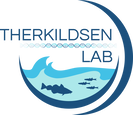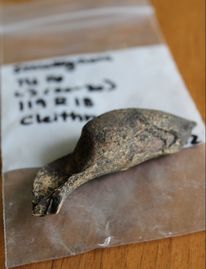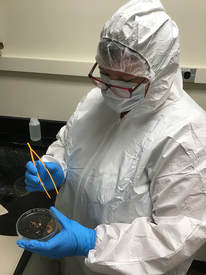Our research aims to improve our understanding of how species adapt to their environment, and how quickly they can respond to altered conditions caused by selective harvest, climate change, or other anthropogenic pressures. With a primary focus on marine fish, we study how spatial and temporal variation in selection pressures interact to shape patterns of genetic variation within species and explore the roles of ongoing genetic adaptation and geographic distribution shifts in promoting species persistence in our rapidly changing world.
While we integrate across many disciplines, our core tools are high-throughput sequencing approaches that are opening completely new opportunities for population genomic studies of non-model organisms. We use cost-effective methods for full genome screening and often couple studies of contemporary variation with time series of genomic data, which allow for direct tracking of changes over known time scales and therefore provide unique opportunities to observe recent dynamics and microevolution in retrospective “real time”. We are also keenly interested in exploring ways to leverage genomic analysis to promote sustainable fisheries management and conservation.
While we integrate across many disciplines, our core tools are high-throughput sequencing approaches that are opening completely new opportunities for population genomic studies of non-model organisms. We use cost-effective methods for full genome screening and often couple studies of contemporary variation with time series of genomic data, which allow for direct tracking of changes over known time scales and therefore provide unique opportunities to observe recent dynamics and microevolution in retrospective “real time”. We are also keenly interested in exploring ways to leverage genomic analysis to promote sustainable fisheries management and conservation.
The genomic basis of fisheries-induced evolution
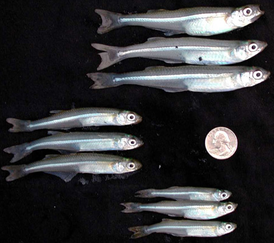
It has become evident that fisheries can inflict evolutionary changes in the exploited populations, but the full extent of these changes and their impacts on future fisheries yields and sustainability remain an open question. Using high-throughput DNA sequencing methods, we have revisited a seminal study, which demonstrated that experimental size-selective harvesting of Atlantic silversides (Menidia menidia, a small marine fish) caused substantial changes in growth rates and a suite of other traits over less than four generations. Characterizing the genomic basis underlying these observed changes will improve our mechanistic understanding of how fisheries-induced evolution operates, and will illustrate which genomic impacts we may expect in wild commercial fish stocks if they have undergone similar evolution due to fishing pressure (we're also looking at this directly; see also the section on historical DNA below).
Delineating biologically meaningful management units
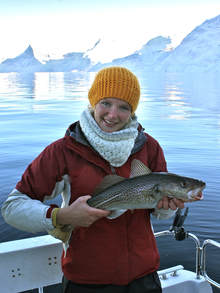
Many fish species are made up of multiple populations, and at any given time, some populations may be doing well, while others are declining due to unfavorable environmental conditions or overexploitation. In such cases, managers may decide to cut back on all fishing effort to allow for stock rebuilding. However, if we can identify biologically meaningful population boundaries, we can continue to fish sustainably in areas inhabited by thriving populations and only close fishing in areas with vulnerable populations, thereby maximizing long-term yields and ensuring continued employment for fishing industries. The revolution in DNA sequencing methods has opened completely new opportunities for detecting population structure and differentiation at an unprecedented level of resolution. We are currently using these methods to expand our previous work to inform the management of Atlantic cod (Gadus morhua) fisheries in Greenland and Iceland (in collaboration with the Greenland Institute of Natural Resources and DTU Aqua in Denmark).
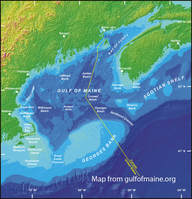
In collaboration with Adrienne Kovach's Lab at the University of New Hampshire, we are also currently using whole genome re-sequencing to characterize previously undescribed patterns of differentiation among cod populations in the Gulf of Maine, and we are involved in the NOAA/NESFC working group on the Atlantic cod stock structure to incorporate these findings into management recommendations. In parallel, we are using a similar approach to search for genomic differences between the summer sucker (Catostomus utawana), the only fish endemic to New York state, and the more broadly distributed white sucker (Catostomus commersonii) to guide management decisions about the future conservation status of the two species.
Reconstructing the past with historical and ancient DNA
The genomic basis of local adaptation
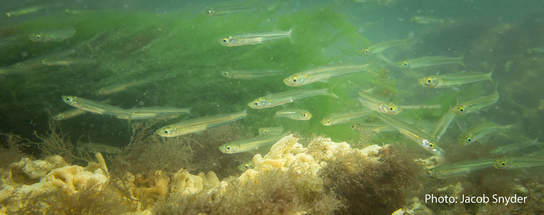
Oceans are large, open habitats, and it was previously believed that their lack of obvious barriers to dispersal would result in extensive mixing, preventing organisms from adapting genetically to particular habitats. It has recently become clear, however, that many marine species are subdivided into multiple populations that have evolved to thrive best under contrasting local environmental conditions. Nevertheless, we still know very little about the genomic mechanisms that enable divergent adaptations in the face of ongoing intermixing. In addition to the cod projects described above, we are using the Atlantic silverside (Menidia menidia), as a model for advancing our knowledge in this area. The Atlantic silverside is a small estuarine fish that exhibits a remarkable degree of local adaptation in growth rates and a suite of other traits tightly associated with a climatic gradient across latitudes. Decades of prior lab and field studies have made it one of the marine species for which we have the best understanding of evolutionary tradeoffs among traits and drivers of selection causing adaptive divergence. Yet, the underlying genomic basis is so far completely unknown.
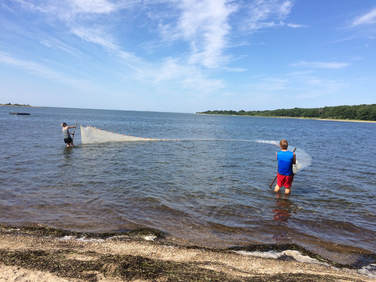
Along with our collaborator Hannes Baumann at the University of Connecticut, we are generating a reference genome along with linkage maps and quantitative trait locus maps, and are using whole genome sequencing data from fish collected across the distribution range to characterize the genomic basis and architecture underlying local adaptation in this species. Varying levels of gene flow up and down the east coast of North America create a natural experiment for testing general predictions about the genomic mechanisms that enable adaptive divergence in the face of gene flow. To better understand the mechanisms involved, we are also collecting time series of samples from several locations to directly study how dispersal - selection dynamics play out over seasonal time scales. This should help us infer whether or how selection against migrants and their offspring maintains local adaptation despite homogenizing connectivity and how the remarkable degree of local adaptive divergence across the environmental cline. More details here.
Genetic ingredient tracing in aquaculture feeds

Aquaculture is the fastest growing sector of the global food system, creating an enormous demand for feeds that themselves contain fish. The associated supply chains are largely unregulated and invisible, yet have far-reaching implications for ecosystems and human health. In collaboration with Pete McIntyre and other colleagues, we are working to examine the species composition and geographic sources of fish products used in aquaculture feeds worldwide. Our initial tests based on metabarcoding have revealed an astounding diversity of fish species used in aquafeeds globally (manuscript in prep), but due to amplification biases, metabarcoding does not allow us to reliably evaluate the relative abundance of different constituents and distinguish common from rare constituents in feeds. To overcome this limitation, we're now exploring the potential for developing a cost-effective shotgun metagenomic approach for taxonomic classification of tissue mixtures.
